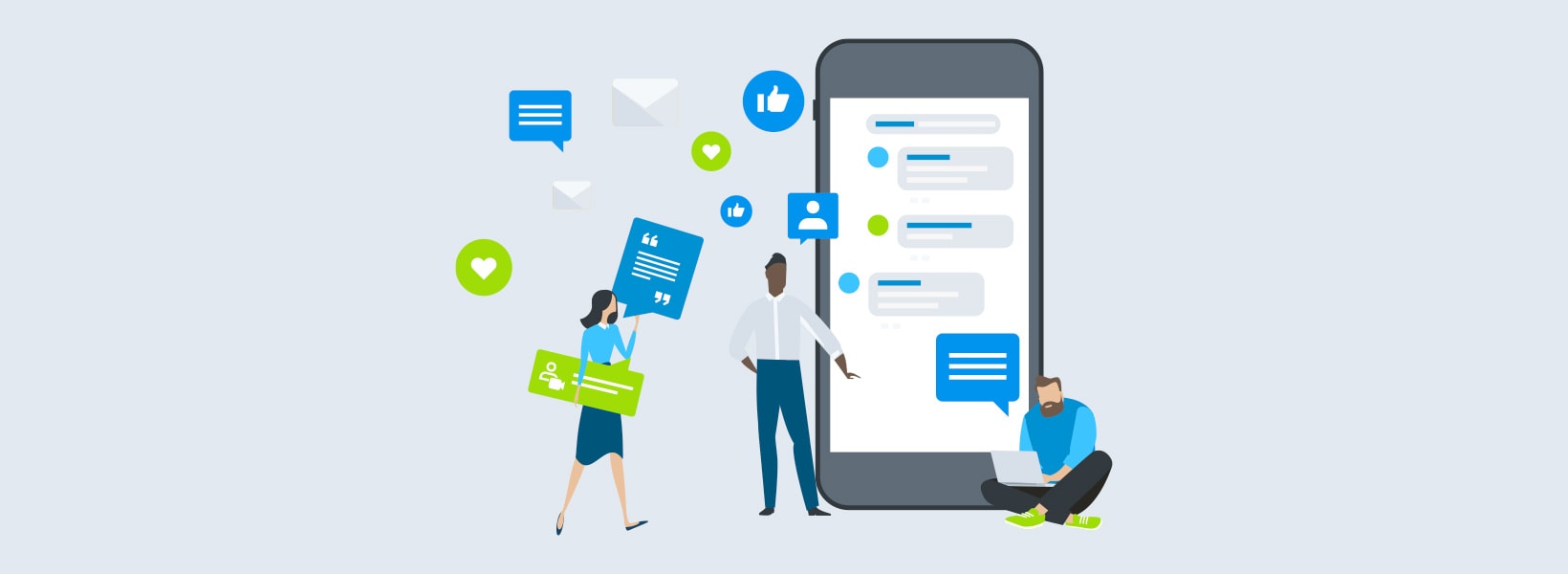It seems like just yesterday that the customer service industry
began transitioning from a multichannel to an omnichannel mindset.
It was a shift backed by data—lots of it. According to Marketing Week, 15 years ago the average consumer used two touchpoints when making a purchase and only 7% regularly used more than four. Today, consumers use an average of almost six touchpoints with nearly 50% regularly using more than four.
But, a mindset shift is only part of the equation. For years, many
companies struggled to cobble together the best customer experiences they
could. They were sold on the idea of omnichannel engagement, but their
operations didn’t back it up — what use are all the channels in the world if your
customer’s story and data are kept in silos?
Cut to everyone heralding the premature death of omnichannel. New buzzwords came out like “channel-less” and “harmonized retail” (for real). But these words all pointed to the same thing: the need for a CX solution that puts the customers above the channel, and harnesses technology to give agents the tools and visibility to deliver deeper customer care.
Digital omnichannel is the next word in customer experience.
Here’s what it means and how to put it to work.
What is Digital Omnichannel?
At its core, the digital omnichannel promise is simple; it means
supporting customers effectively and cohesively across all digital
channels.
In customer service, digital omnichannel effortlessly blends
digital touchpoints to form a unified view of the customer. Agents can view
every interaction that a customer has had with the company, no matter the
channel of origin, from a single console. This visibility lets them create a
cohesive, deeply personalized customer profile that enables higher quality
service.
By combining the information gathered from channels like live chat, SMS, social media, and more with pre-existing data found in customer databases or CRM systems, companies can eliminate the blind spots and roadblocks that result from siloed customer service systems and channels for a frictionless and more successful customer journey.
Why Adopt Digital Omnichannel?
In theory, digital omnichannel aligns perfectly with the existing
philosophies of many companies, which are to serve customers quickly,
efficiently, and effectively. Here are some of the ways that digital
omnichannel is helping companies meet their customer service goals and drive
operational efficiency:
For agents,
digital omnichannel engagement means simpler customer communication and greater
ease of use. No more social media queries getting sent to the marketing team,
who then emails them to customer service. No more shared inboxes. With a
unified view of the customer across all channels, agents can resolve queries
more easily, increasing their overall capacity.
- Increased customer
satisfaction
Customers expect agents to have access to their whole story when they reach out for support. According to a survey conducted by UBM, 75% of participants cited having to repeat themselves as their biggest issue when communicating with a brand. With digital omnichannel, agents have both the tools and the context they need to satisfy customers and improve KPIs such as first contact resolution rate (FCR) and average handle time (AHT).
Improving customer satisfaction can indeed increase revenue—but it can also reduce costs. According to McKinsey, brands that improve the customer journey see their revenue increase by 10 to 15% while also lowering costs by 15 to 20%.
- Increased agent satisfaction
When a channel becomes secondary to the customer experience, it also becomes secondary to the agent experience. According to McKinsey, companies that invest in their customer experience also see an improvement in employee engagement by 20% on average.
How Do You Adopt Digital Omnichannel?
Once you understand digital omnichannel, the next step is to devise a plan to put it into action. There are three practical steps to building your plan:
1. Identify
your channels
At this point, chances are you already know which channels your
customers want and expect (not sure? Ask them). Here are the top digital
channels we recommend:
- Live
chat
- Ticketing
and email
- SMS/Messaging
- Social
media
- Knowledge
base
- Chatbots
These channels cover both your real-time and “anytime”
communication bases. They also provide enough self-support cushion to take the pressure
off your agents in times of high-volume or after-hours support requests.
2. Create a
digital roadmap for your customers’ journey
Once you have selected your channels, it’s time to create your customer experience map. Ask yourself who your customers are, where they are coming from, and what actions you want them to take. Break down your key milestones and consider how you can guide your customers through those milestones using your various digital touchpoints and channels. Consider the role of your website, social channels, live chat, knowledge base, mobile chat, and more, in moving your customer from awareness to loyalty. With digital omnichannel, you will be able to effortlessly watch them move through these stages as you collect data on their engagements.
3. Choose your
technology
Like omnichannel before it,
digital omnichannel is little more than a nice theory unless your operations
back it up. So, how do you make your customer service operations digital
omnichannel-friendly?
You don’t want to spend resources trying to cobble it together yourself because that will introduce a technical price that isn’t worth it. The ideal digital omnichannel solution will integrate with your other core business systems, including CRM, and will scale as your company grows and new technologies and channels are introduced. Agent Assist is the perfect tool to optimize agent efficiency and productivity whilst ensuring accuracy every time. Agent Assist monitors your live chats, understands the questions being asked, and suggests the answers from your knowledge base, canned messages and chatbot intents. Within a double-click of the mouse, your agent can choose and send the most relevant answer. Fast, accurate and easy.
Recommended for you: Agent Assist ROI Calculator
The right solution should also have top-notch routing, prioritization, and analytic capacities. Tools such as intelligent routing ensure that your customer’s inquiry gets to the right person at the right time, with the flexibility you need to define your own unique routing procedures. Being able to segment your customers your way—by geography, historical sales, industry, and more—will further help you offer a more specialized and effective customer service program.
On the analytics side, you’ll want to be able to set the right KPIs, keep close tabs on them, and learn from what’s going on so you can tweak and improve how you’re delivering.
Conclusion
A great customer experience isn’t merely about implementing more channels.
It’s about making it easier for your customers to contact you when and where
they want. It’s about how the stories gathered across those channels are appropriately
unified. And it’s about equipping your agents with everything they need to
create an ongoing cycle of deeper customer understanding and better service
Take your time to research an effective digital omnichannel
solution that matches your needs, and to carefully plan out your digital
customer journey. You can’t cut corners when building a great customer
experience. Fortunately the rewards of thoughtful and well-implemented digital
omnichannel engagement will last for years to come.
This post includes highlights from our Omnichannel white paper. Read the full story by downloading the white paper below.
Download now: Customer Engagement 2021 White Paper
Digital omnichannel is the next big thing of the new decade. Found out which digital channels are right for you and how to structure your customers’ journeys across them to ensure you are satisfying today’s customer experience expectations.
Download Now
White Paper







